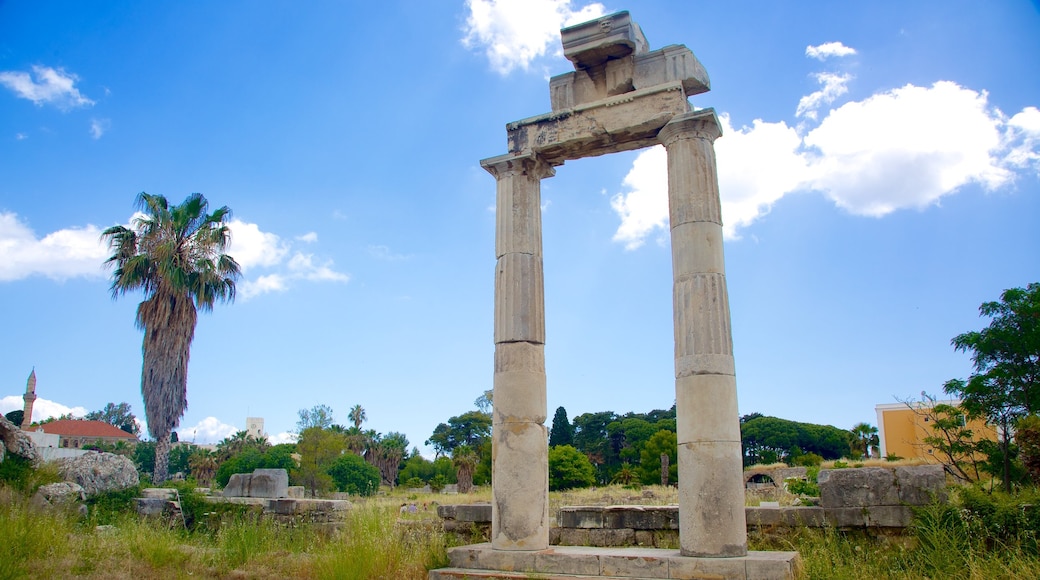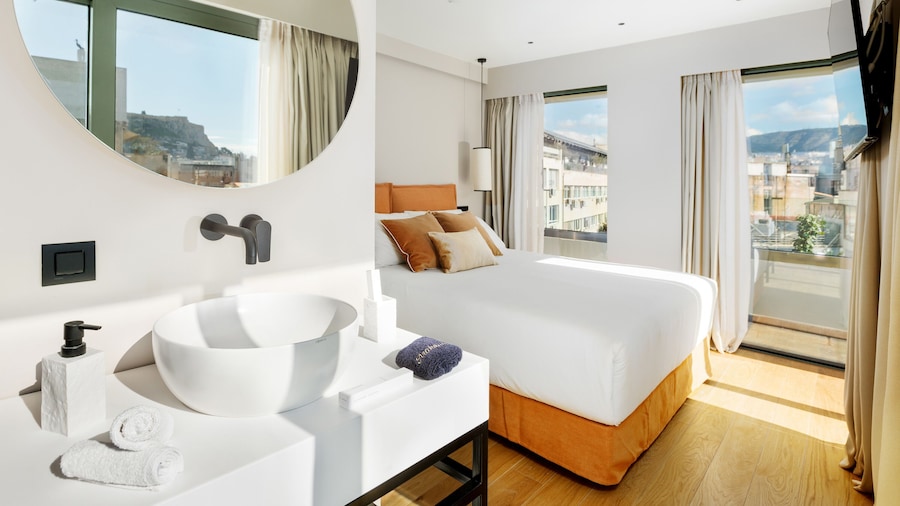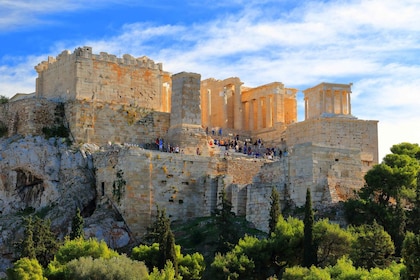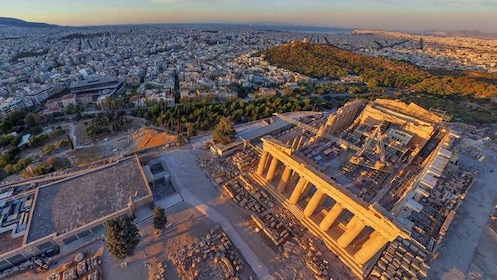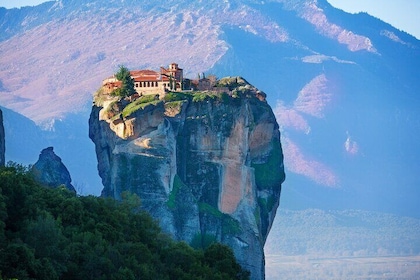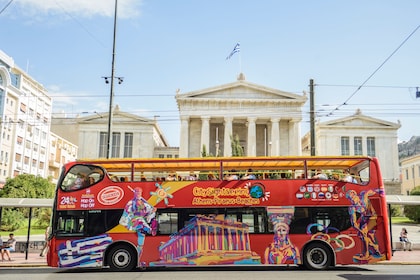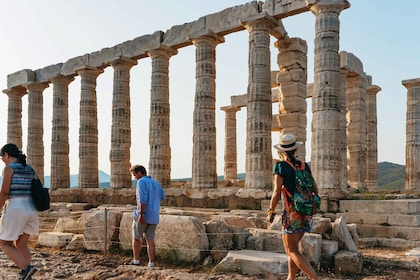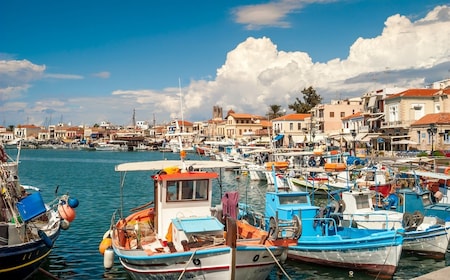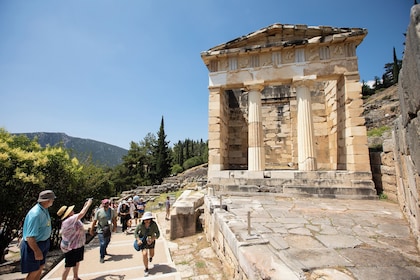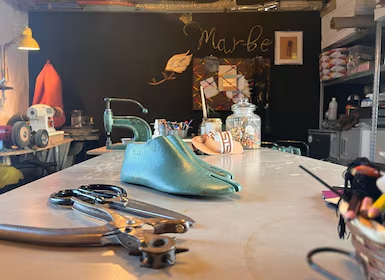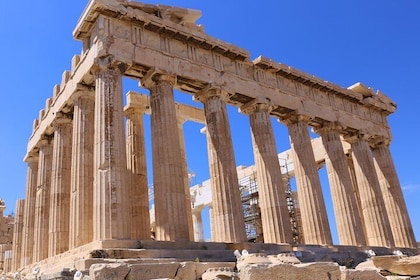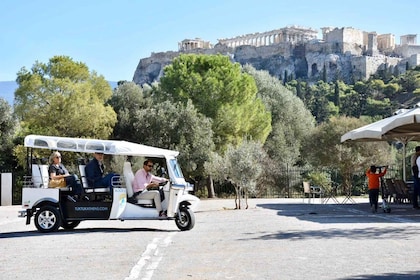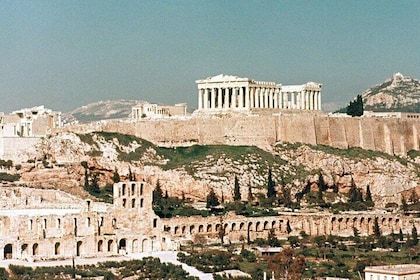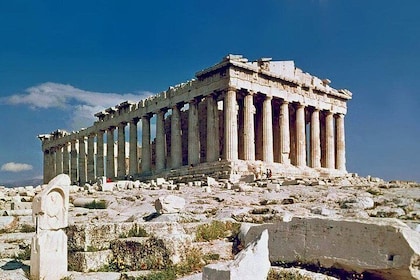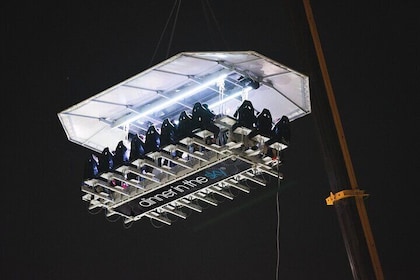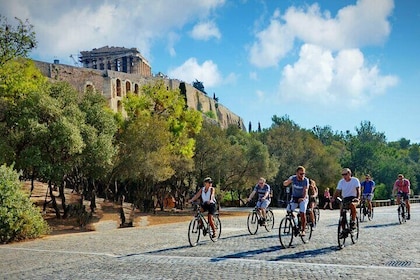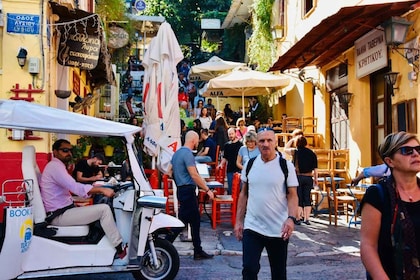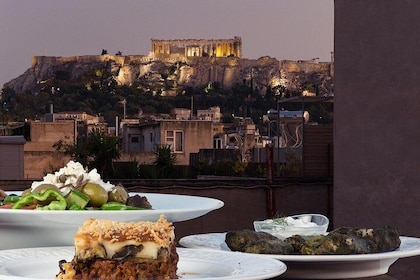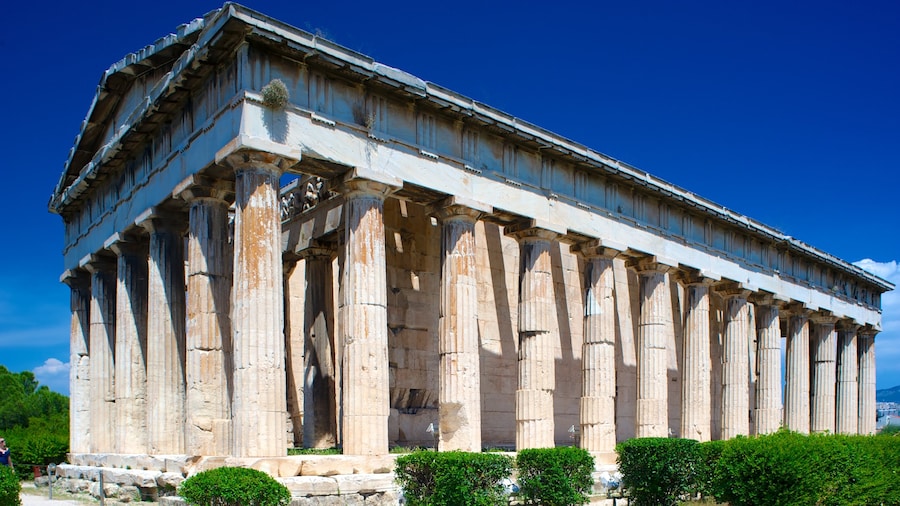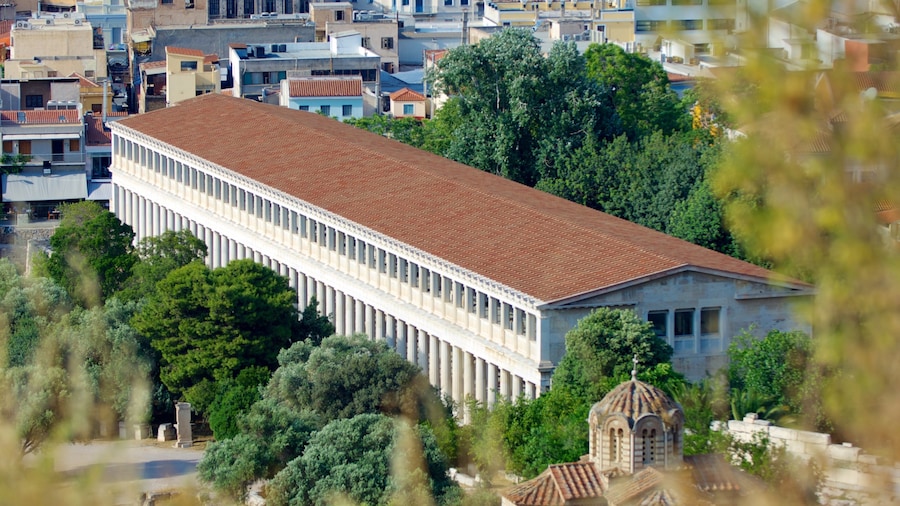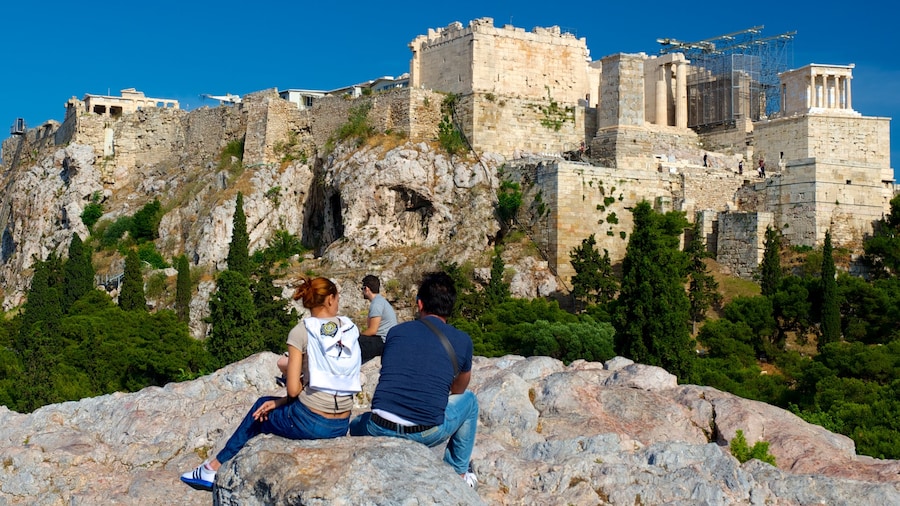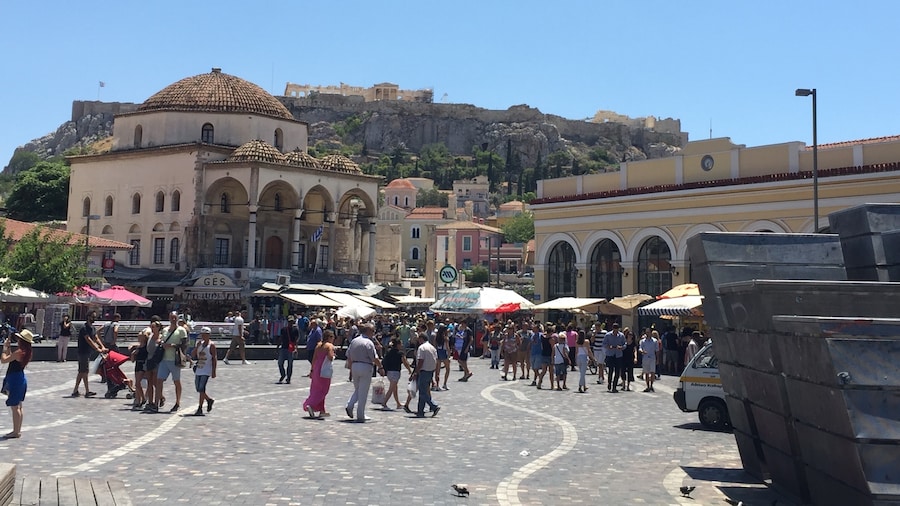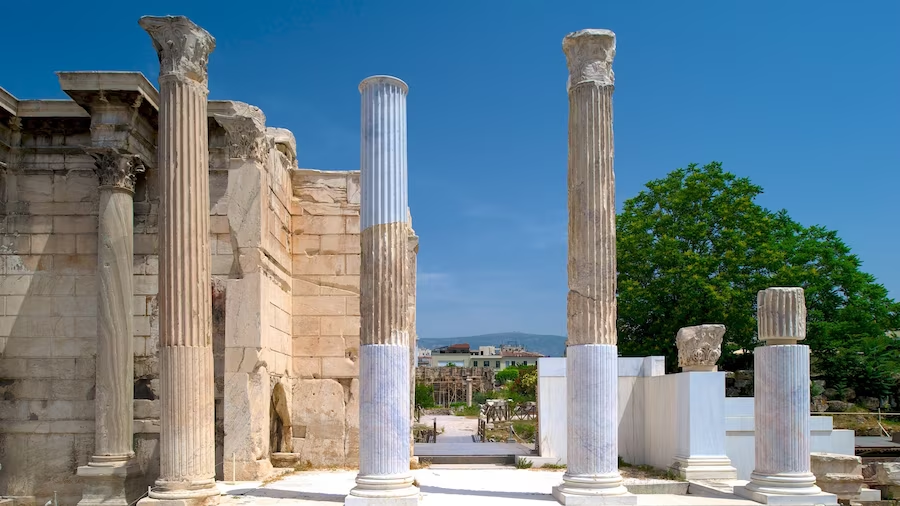Walk along the covered promenades where affluent Athenians exchanged gossip, political news, and wares.
The Ancient Agora was once the central marketplace and heart of ancient Athens, its covered promenades lined with shops and statues. Stroll the beautifully landscaped grounds, and explorie the ruins rich with parts of friezes depicting the gods and myths of Ancient Greece. It’s easy to imagine Socrates and Plato discussing philosophy here.
You can easily spend an entire morning or afternoon exploring the temples and ancient promenades where affluent Athenians exchanged gossip, political news, and wares. The Agora was utilized for commerce, political, military and religious activities. While there were once nine churches here, the Aghioi Apostoloi is the only one that remains.
Most of the monuments at the Agora are roped off for preservation, but that won’t stop you from admiring the marble and limestone architecture. The beautifully landscaped grounds showcase a number of plants used for centuries, such as almond trees, myrtle, and pomegranate. Stand in the center of the Agora to take in a spectacular view up to the hilltop of the Acropolis.
Stroll to the Agora’s northwest corner, atop the hill of Kolonos Agoraios, to find one of the best-preserved Doric temples in Greece, the Temple of Hephaestus. It has 34 classical Greek columns and is 104 feet (32 meters) in length. Hephaestus, the patron god of metal working and craftsmanship, protected the numerous potters' and metal-workers’ shops in this area of the Agora.
Be sure to check out the hillside behind the temple, where you can explore archeological ruins half-covered by deep undergrowth. Perhaps Simon the shoemaker had his shop here this famous meeting place for Socrates and his students was in the Agora, but nobody knows exactly where.
The Ancient Agora is located in the city center, accessible by public transportation. Admission is covered in the cost of the Acropolis, and the site is open daily.
